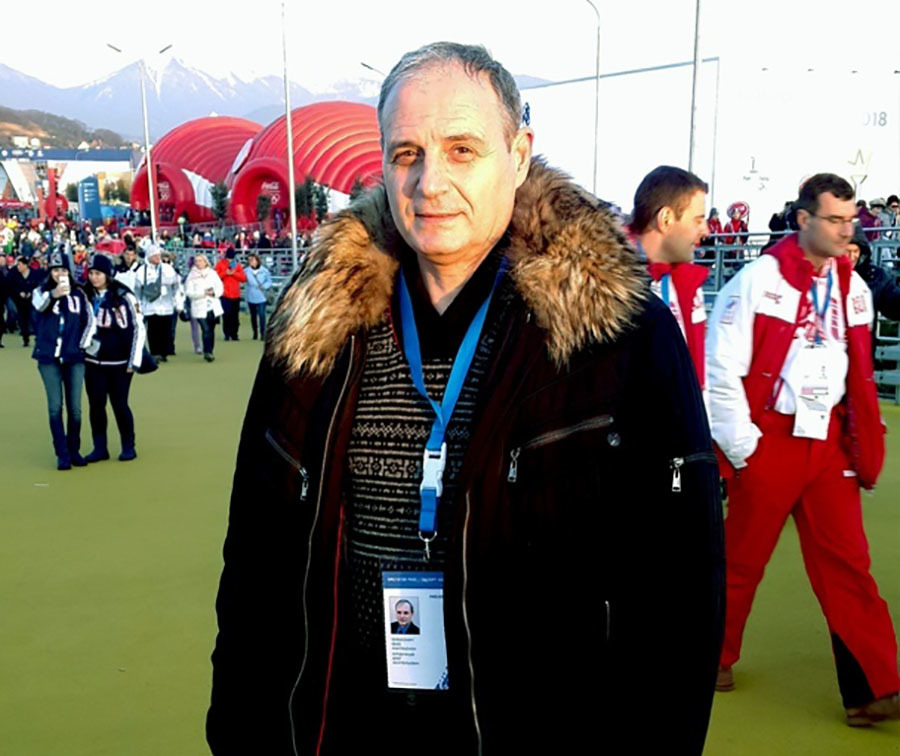On February 26, 2011, three official symbols of the Sochi Olympic Games were announced.
In total, more than 24 thousand works were sent to the competition, the finalists for the first time in the history of the movement were chosen by residents of the host country of the Games by interactive voting.
Among the contenders for the title of the Olympics mascot were, among others, Santa Claus, a bullfinch and even a dolphin on skis.
In the end, the leopard, polar bear and hare won the victory.
Why did the authors choose these particular animals, what they got for reaching the finals and how their life developed after 2014 - in the RT material.
Leopard from Nakhodka
The Central Asian leopard Barsik, as reported in the description of the mascot, is a mountain rescuer-climber, enjoys snowboarding and lives in the Caucasus mountains.
The author of Barsik, 44-year-old Vadim Pak, lives on the opposite end of the country from his character - in Nakhodka.
When the start of the competition was announced, Vadim first of all thought about which animal is associated with the venue of the Olympics.
“I looked on the net who posted what ideas.
Hares, tigers - it's all wrong.
And the leopard is quite associated with the Caucasus, even in Lermontov's poem "Mtsyri" he is, "he explained to RT.
The final version, sent to the competition, was not preserved by Pak due to a laptop breakdown, only one of the early sketches remained.
According to the man, his Barsik is significantly different from the image that the official illustrators for the Olympics eventually created.
© Photo from personal archive
Although the symbol of the Games helped to draw attention to the restoration of the population of the Central Asian leopard, this did not bring much fame to Vadim.
“I don’t feel famous,” adds Park.
At the awards ceremony in Moscow, the winners of the competition received, among other gifts, tickets for the opening and closing of the Olympics.
“You had to get to the Games and pay for housing and meals there at your own expense,” recalls Pak.
“At that time, my sister was seriously ill (she died in April 2014), so I did not use the opportunity to personally watch both ceremonies.”
Three years after the Olympics, Vadim lost his mother and was left alone with his disabled younger sister.
Pak took custody of her.
They were given the apartment in which they live now.
“I used to get a seasonal job - on the fishing line, in fishing.
Now I look after my sister, so I can't go away all the time - I have no one to leave her with, - the man shares.
“There is hardly enough guardianship payments and disability pension, but I don’t want to live off my sister.”
Vadim admitted that he continues to paint when he has free time: “I create fictional images, historical characters.
I try to convey the emotions of the characters.
But I haven’t shown these works to anyone yet ”.
"I'm trying to continue the Olympic story"
The author of the polar bear Polyus, 63-year-old pensioner Oleg Serdechny, lives in Sochi.
He learned about the competition for the symbols of the Olympics from the Internet.
“I made up a graphic layout and sent it to Moscow, and after about a week they called me,” he told RT.
The white bear invented by the Sochi resident Leading, according to the description of the talisman, lives beyond the Arctic Circle in an ice igloo.
The lead was brought up by polar explorers: they taught him to ski, ice skate, sled and play curling.
The external resemblance to another famous bear - the brown Bear from the 1980 Olympics, according to Serdochny, is no coincidence and is intended to emphasize the continuity of events.
Together with other authors of Olympic symbols, Serdechniy came to Moscow for prizes.
In memory of the victory in the competition, in addition to gifts and certificates, he only had a toy mascot of the Games.
“Although upon arrival all my friends and acquaintances thought that I had become a millionaire,” the man laughs.
© Photo from personal archive
By first education, the author Vedi is a physical education teacher.
He managed to work with football teams, and after retirement he got a job teaching at the Sirius educational center, which appeared after the closing of the Games on the basis of sports facilities.
“This is how I try to continue my Olympic history,” added Serdechny.
"I drew a bunny in an hour"
The author of the third symbol of the 2014 Olympics, Bunnies, is Sylvia Petrova, a native of the Chuvash village of Novoe Buyanovo.
At the time of winning the competition, the girl was still in school.
In an interview, her teacher said that Sylvia constantly drew in her workbooks, not excluding that the official mascot of the Games appeared during one of the lessons.
Bunny, according to the "legend", studies at the Forest Academy, helps her mother in a family restaurant and participates in sports competitions.
As Sylvia confessed to reporters, she “drew on paper in just an hour” and sent her character to the competition, which she heard on television, on the last day.
Since the girl draws a lot of animals, the work did not make much work for her: "Inspiration surged in, and it happened by itself."
Like the authors of the rest of the symbols of the Sochi Games, Sylvia is not a professional artist.
She herself believes that her father's genes manifested in her: he, according to the girl, draws like a real artist.
Of her favorite masters, in an interview, she noted the works of landscape painters Ivan Shishkin and Viktor Vasnetsov.
Now the girl is 26 years old. After school, she graduated from the Faculty of Journalism of Cheboksary State University and moved to Cheboksary. There she lives with her husband and children, works at a local instrument-making enterprise.

